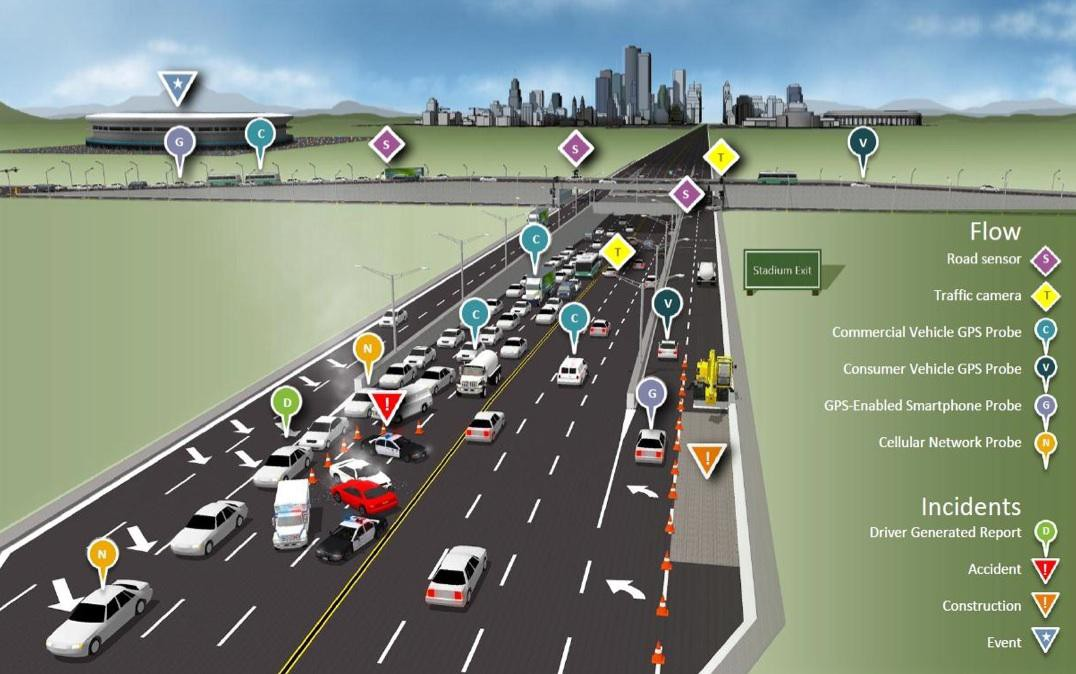The IoT technology (Internet of Things) is the key driver for the car, home, and office automation. Various organizations use IoT enabled RFID tags to track the movement of goods in transit. Data gathered through the smart IoT devices can be used by countries to manage traffic, reduce pollution, and make better use of the infrastructure. IoT app development companies are creating apps for controlling digital devices using smartphones, wearables, and other smart devices.
- According to IT Pro in 2018 near to 3.6 billion internet-connected were used for daily tasks.
- According to Market analysts, the number of connected devices will double from 2017 to 2020.
Some of the popular IoT applications include smart home app development services , wearables, smart cities, smart grids, industrial internet, connected cars, connected health, smart retail, smart supply chain, and smart farming.
Role of IoT In Making Cities Smarter
Densely populated cities like Tokyo( 37.4 million population), Jakarta(31million), and Delhi (26 million) are facing difficulties in conserving their resources, managing traffic, disposing of the garbage, and reducing air pollution. Data collected through IoT devices can be used to prevent these capital cities from the effects of a growing population. Introducing IoT to these cities improves the quality of life and reduces the consumption of resources.
Smart City Components and their Impact in the IoT Era:
1. Smart Infrastructure
- Digital technologies play an effective role in the management of resources. Buildings and infrastructure must be integrated with IoT systems to minimize resources and achieve sustainability.
- Populated countries should maximize the use of electric cars and self-propelled vehicles to reduce CO2 emissions.
- Using intelligent technologies can enable cities to achieve energy-efficiency and enable environmental friendly infrastructure
- IoT enabled occupancy sensors can reduce the daily consumption of electricity. Smart lighting options even set brightness levels to minimize the wastage of electricity.

Smart Buildings with IoT Sensors
2. The City Air Management Tool (CyAM):
A cloud-based software-suite by Siemens to capture pollution data in real-time and forecast emissions. It forecasts next three to five days emissions with up to 90% accuracy.
- An algorithm based prediction works with an artificial neural network
- The City Air Management Tool with IoT sensors distributed across the city predicts the air quality of the upcoming days and displays it on the dashboard.

3. Traffic Management
- The biggest challenges for populated cities is to optimize traffic
- Los Angeles, the busiest cities in the world, implemented an intelligent transport solution to minimize the flow of traffic.
- Pavement integrated sensors share real-time updates of traffic flow with traffic management platforms to control highly congested roads during traffic situations.
- The sensors use historical data to predict the diversion of traffic without human intervention.
4. Smart Parking
- People of populated cities need smart parking solutions to identify when a vehicle has left the parking area.
- Sensors in the ground report the availability of free parking space to the driver via smartphones
- Smart parking solutions now prevents mid-sized cities from investing in a complicated infrastructure

5. Smart Waste Management
- Populated countries face difficulties to dispose of their wastes effectively. IoT enabled waste management solution segregates renewable and non-renewable wastes to resolve ineffective waste collection issues.
- Waste containers with sensor levels share updates on truck drivers smartphones when a threshold reaches the maximum level. The message alert prompts the drivers to empty a full container to avoid half-empty drains.

Future IoT Applications
1. Vision Van of Mercedes-Benz
Mercedes-Benz Vision Van is based on a van concept designed for urban areas. It is the first van worldwide characterized by various next-gen technologies onboard including autonomous drone delivery. The digitally connected process chain uses drones to deliver goods within a radius of ten kilometers. Manual loading takes 2 hours but the automated smart van loads various goods at once within 5 minutes. The drone delivery has reduced the time to deliver goods on the last mile.

2. Smart Eye
Smart eye technology is equipped with smart IoT sensors, Wi-Fi, and Bluetooth. The technology connects with human actions and intentions to interpret reality. Smart eye enables users to access their smartphone features right in front of their eyes without any distraction. It enables users to read messages, browse through the web and more.

The Future of IoT is unlimited. The technology has made changes in various sectors and it is all set to transform the populated cities to prepare them for the future. From waste management to pollution control we provide smart IoT solutions for office and home automation. Our IoT app development experts make smart IoT apps enable users to control their devices(AC, Refrigerators, smart locks) remotely. Get in touch with our experts to make the best use of IoT technology into your business.

No comments:
Post a Comment